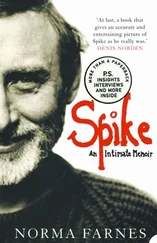One day—it must have been at the end of August or the beginning of September—Mrs. Kennedy called me at the command post to say she wanted to go for a walk. When she came out of the house, she seemed to have a brighter look on her face than I had seen in weeks.
We began walking, and she turned to me, with a glint in her eye.
“How would you like to go back to Greece, Mr. Hill?”
I looked at her with surprise. “I would love to go back to Greece.”
She smiled and said, “Well, I have arranged to join Lee and Stash on a cruise through the Greek islands on a private yacht.”
“That sounds wonderful, Mrs. Kennedy. When will you be leaving?”
“We haven’t decided for sure, but we’re hoping to go in a few weeks.”
A few weeks? I tried to be nonchalant, but I needed to find out as much information as possible. Mrs. Kennedy still didn’t truly understand how much effort it required for us to ensure her security outside the country.
“Do you know the name of the yacht?” I asked.
“Yes, actually I do. It’s called the Christina. It’s Mr. Onassis’s yacht.”
I lost my breath and was unable to speak for a few seconds. President Kennedy’s words—the request he had made before Mrs. Kennedy’s first trip to Greece back in 1961—came rushing into my mind: Whatever you do in Greece, do not let Mrs. Kennedy cross paths with Aristotle Onassis.
I was stunned to think that now, for some reason, it was all right for Mrs. Kennedy to associate with this man.
This trip to Greece had apparently been a topic of conversation between Mrs. Kennedy and her sister, Lee, when Lee came to be with her immediately after Patrick’s death. Lee and her husband, Prince Radziwill, were friends of Onassis and had been on his yacht. It seemed that Lee had contacted Onassis and the invitation had been extended. A trip to the Greek isles, on what was reputed to be the most luxurious private yacht in the world, was too good of an opportunity to turn down.
I knew Mrs. Kennedy would not go on a trip like this without her husband’s concurrence. But why now, after the loss of their son, would the president be willing to let her go on Onassis’s yacht, where, I assumed, the owner himself would be aboard? I could only surmise that it was because she had been so depressed, and perhaps the president thought a trip might give her something to look forward to.
“I don’t want a lot of publicity,” she said, “but I suppose everyone will find out.”
“Yes, I’m sure the word will get out, and,” I added, “there will be a great deal of interest.”
I asked her a few questions about who else would be aboard, any other stops she might make, but it seemed the trip was still in the planning stages.
“Please let me know as soon as possible of any additional details, okay?” I requested.
“Oh, Mr. Hill, you always want to have so much information about these little trips I take.”
Mrs. Kennedy’s “little trip” was going to involve the ambassadors of two countries, a contingent of Secret Service agents and State Department personnel, and the navies of Greece, Turkey, and the United States. My job was to make sure she didn’t have to worry about any of that.
As soon as we returned from the walk, I called my supervisor, Jerry Behn, the SAIC of the White House Detail, to let him know Mrs. Kennedy’s plans. We had to notify the Paris Secret Service Field Office, which handled operations in Europe, and get Agent Ken Giannoules—our Greek-speaking agent—to start setting things up as soon as I received the schedule.
A few days later, Mrs. Kennedy informed me that the dates were set. We were leaving October 1 and would be gone two weeks. Mrs. Kennedy was only bringing Provi with her—no other staff—and it was to be kept as private as possible.
As we began to make the plans for the trip, information was flowing back to me that a great many people were very upset about Mrs. Kennedy going to Greece. Members of Mrs. Kennedy’s staff as well as the president’s were expressing concern about this proposed trip and how it would appear to the public—not just that she was choosing to vacation abroad, but specifically that she would be associating with Aristotle Onassis. Not only did he have some long-standing legal issues with the United States government, but his reputation was that of a womanizer and opportunist. There had always been concern about Mrs. Kennedy’s sister Lee’s friendship with Onassis, but to have Mrs. Kennedy herself spending time on his private yacht? This took on a whole new set of problems. There was grave concern that once Onassis got his foot in the door, he would take advantage of the situation to the detriment of everyone but himself. The general theme was that he could not be trusted.
The president had been made aware of the potential political fallout, but he insisted that Mrs. Kennedy would be permitted to go as planned. That was the end of that.
We remained at Squaw Island for the seventy-fifth birthday party for the president’s father on September 6, and then it was on to Hammersmith Farm in Newport, for most of the rest of September. On September 12, the president flew in from Washington to celebrate their tenth wedding anniversary. Good friends Ben and Tony Bradlee came as weekend guests, and the next few days were spent swimming at Bailey’s Beach, cruising on the Honey Fitz , and playing golf at the Newport Country Club. Mrs. Kennedy seemed to be slowly coming out of the depressed state she had been in and began enjoying activities again. It was wonderful to see her renewed spirit and happy expression return.
Mrs. Kennedy and the children finally returned to the White House with the president on Monday, September 23. It was the beginning of the school year for Caroline in the school established by Mrs. Kennedy within the White House. To get the school year off to a rousing start, Mrs. Kennedy had arranged a surprise for all the children on Wednesday, September 25. Mrs. Kennedy, Caroline, and John met the students at the entrance to the White House and announced they were going on a field trip. To Dulles Airport. For a ride on the Goodyear blimp.
You’ve never seen a group of students more excited in your life.
I was up to my eyeballs trying to make arrangements for the trip to Greece, so I sent Paul Landis and the Kiddie Detail agents with Mrs. Kennedy and the twenty youngsters for the adventure of a lifetime.
Later, Mrs. Kennedy told me what a wonderful time they all had, especially John.
“You know how much John loves airplanes and flying, Mr. Hill. I think someday he is going to be a pilot.”
We were scheduled to take a commercial flight from New York City to Rome, and then on to Athens, the evening of October 1. It so happened that the Imperial Majesty Haile Selassie, Emperor of Ethiopa, was arriving in Washington the same day. In her first public appearance since the death of Patrick, Mrs. Kennedy joined the president for the welcoming ceremonies at Union Station, and rode in the short motorcade to the Blair House, where the emperor was staying. The seventy-one-year-old Selassie was small in physical stature, but he was held in high regard around the world, having been the respected leader of his country for more than four decades. He came bearing personal gifts—an exotic leopard-skin coat for Mrs. Kennedy, a carved ivory doll for Caroline, and a carved ivory soldier with sword for John—and Mrs. Kennedy found him charming. They spoke in French together, and I could tell she wished she could have spent more time with him, but because of our departure that evening, she wasn’t able to attend the state dinner that was planned in his honor.
EVER SINCE MRS. Kennedy’s trip to Greece had been announced, I kept waiting for the president to call me into his office to give me some sort of instructions concerning Mr. Onassis. But I never got the call. Nothing was ever said.
Читать дальше











